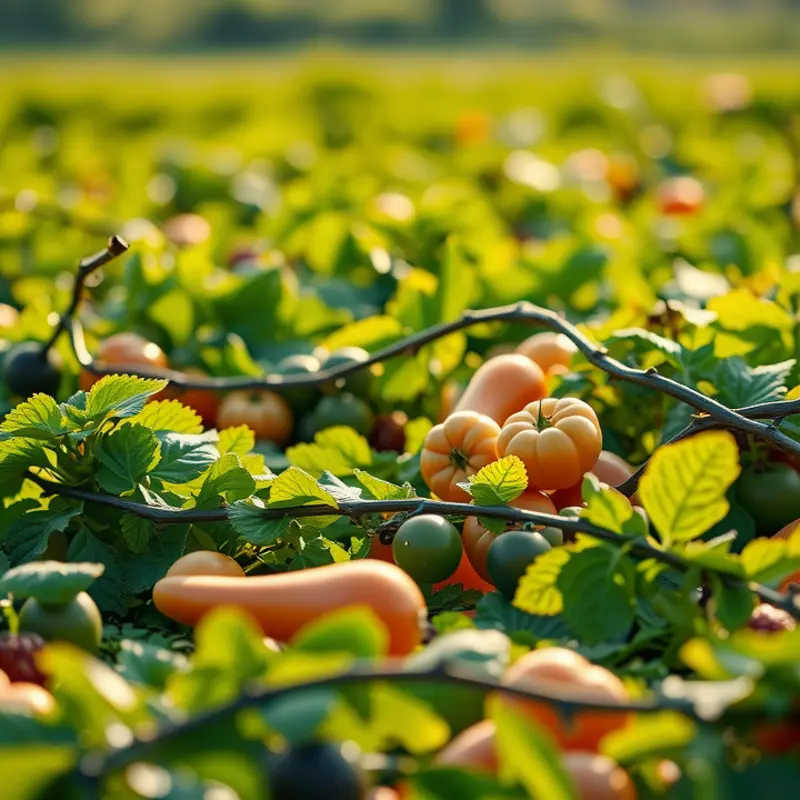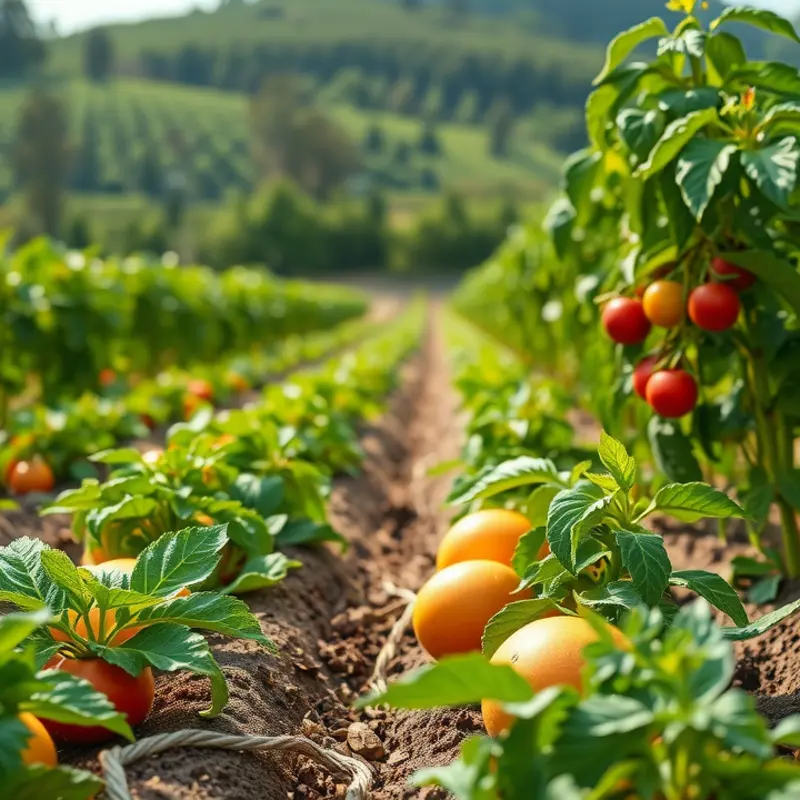Choosing foods with low carbon footprints significantly impacts the environment. By prioritizing sustainable options, you contribute to reducing greenhouse gas emissions, protecting biodiversity, and promoting practices that are beneficial for our planet. In a world where food production is one of the largest contributors to climate change, understanding and selecting eco-friendly foods becomes imperative. This guide explores various food options that lower your carbon footprint while also nourishing your body and the environment.
Incredible Plants: The Power of a Plant-Based Diet

Choosing a plant-based diet not only enhances personal health, but also significantly reduces one’s environmental footprint. By opting for a variety of fruits, vegetables, grains, and legumes, individuals can make a profound impact on planetary health. Substituting plant-based foods for animal products requires fewer resources such as water and land, and generally emits fewer greenhouse gases.
Fruits like apples, berries, and citrus are not only rich in vitamins but also require minimal input resources compared to meat production. Similarly, vegetables such as leafy greens, carrots, and bell peppers are staples in a sustainable diet, being both nutrient-dense and environmentally friendly. These colorful plants offer dietary fiber, antioxidants, and a plethora of vitamins.
Grains are another cornerstone of plant-based eating that supports sustainability. Quinoa, barley, and oats are examples of grains that serve as excellent sources of energy and protein while being resource-friendly crops. Whole grains carry added benefits of reducing cardiovascular disease risks and promoting digestive health.
Legumes such as lentils, chickpeas, and beans are central to a sustainable diet. These plants improve soil health by fixing nitrogen, reducing the need for synthetic fertilizers, and boasting a low carbon footprint. Incorporating legumes into your meals can provide essential proteins and nutrients, often replacing the need for animal proteins.
Choosing seasonal and local produce further enhances the benefits of plant-based living. Consuming foods in their harvest periods supports local agriculture and decreases the carbon emissions associated with long-distance transportation. For instance, think of a summer tomato—juicy, ripe, and abundantly available at local farmers’ markets. Consuming these local delights strengthens the local economy and reduces the travel footprint of food.
The power of a plant-based diet lies in its diverse flavors, vibrant dishes, and positive environmental impact. By embracing more fruits, vegetables, grains, and legumes, particularly those that are local and seasonal, individuals can contribute significantly to the health of the planet and themselves. To explore a delicious plant-based recipe featuring chickpeas and fresh vegetables, consider trying Mediterranean Chickpea Salad, which offers a burst of flavor and nutrition.
Eating sustainably isn’t merely a trend but a necessary shift towards a healthier planet. Each meal offers an opportunity to choose ingredients that preserve natural resources and foster a greener future. As we reflect on our meal choices, integrating nutrient-rich, low-impact plants into our diets can drive meaningful change for the environment.
The Delicious Side of Sustainable Eating: Local and Organic Choices

Supporting local farmers and choosing organic products offer not only environmental benefits but also promise a delightful culinary experience. Buying locally reduces the food miles, the distance your food travels from farm to table, which significantly decreases carbon emissions. This practice directly supports community farmers, allowing them to continue their sustainable practices. Locally sourced foods are often fresher, harvested at peak ripeness, and thus richer in nutrients.
Organic farming focuses on the harmony of ecosystems, avoiding synthetic fertilizers and pesticides. By maintaining soil health and biodiversity, these farming practices contribute to a lower carbon footprint. Organic foods are likely to have higher levels of certain antioxidants and come without the burden of toxic chemicals.
To embrace local and organic choices, start by visiting farmer’s markets. Not only do these markets offer a personal connection with those who grow your food, but they also provide a variety of products that align with the season. Seasonal eating is not only sustainable but also ensures that you’re eating food at the height of its flavor and nutritional value.
Joining a community-supported agriculture (CSA) program is another excellent way to support local farmers. CSA members receive a share of a farm’s harvest, which can introduce you to a variety of new vegetables and fruits, broadening your culinary horizons while supporting sustainable agriculture.
When shopping at grocery stores, look for labels that indicate the origin of the produce. Prioritize products grown close to your location. Many stores highlight local goods, making it easier for you to make informed choices that benefit both your health and the planet.
When opting for organic choices, understand the labeling. The ‘Certified Organic’ label ensures the product meets strict federal guidelines. Supporting organic is supporting clean soil and water, livestock raised without antibiotics, and sustainable farming practices.
Participate in local food co-ops where you can purchase bulk goods and fresh produce. Food co-ops are often committed to transparency, sustainability, and community engagement. These shops usually feature a higher proportion of organic and locally sourced items.
Incorporating sustainable choices into your diet can seamlessly integrate with various eating preferences. For instance, by sampling dishes like Mediterranean Chickpea Salad, you celebrate the freshness of local ingredients with the nutritional benefits of a plant-based diet.
Ultimately, supporting local and organic movements is about cultivating a deeper relationship with your food. It is about making conscientious decisions that contribute to a sustainable food system. Adopting these practices not only ensures a healthier planet but also brings the joy of fresh, flavorful food directly to your table. By choosing to eat sustainably, you partake in a cycle that benefits both your community and the environment.
Final words
Choosing foods with low carbon footprints is a powerful way to contribute to environmental sustainability. By embracing a primarily plant-based diet and supporting local organic farms, you not only nourish your body but also help reduce greenhouse gas emissions, conserve water, and protect biodiversity. Every meal becomes an opportunity to make a positive impact. As you shift toward more sustainable eating habits, remember that every small choice matters. Your actions can inspire others, creating a ripple effect throughout your community and beyond. Together, we can foster a healthier planet for current and future generations.








